Turn Audio Files Into Rss Feed
Welcome back! You've successfully signed in.
Success! Your account is fully activated, you now have access to all content.
Success! Your billing info is updated.
Billing info update failed.
The tags in your podcast RSS feed provide key information about your show (podcast series) and episodes, affecting how and when they are displayed in podcast directories.
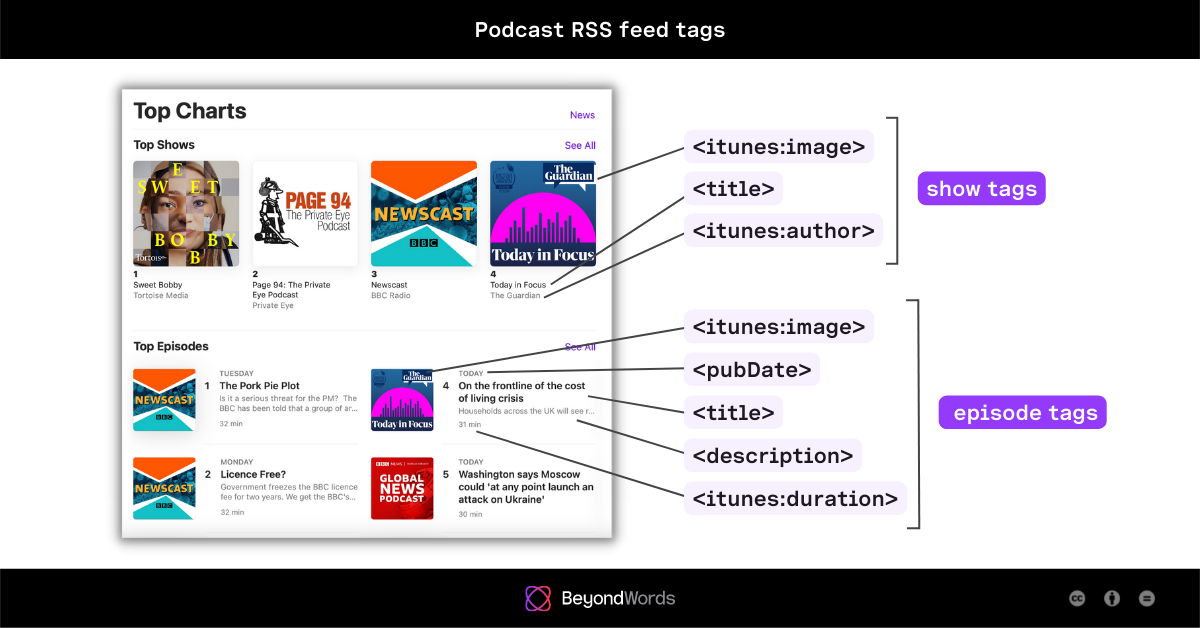
Optimizing this metadata can therefore improve podcast visibility and engagement on directories like Apple Podcasts, Google Podcasts, and Spotify. It will not only make it easier for users to find your show and episodes, but make them more likely to listen.
And, when you create or host your audio on BeyondWords, setting up a podcast RSS feed is simple.
Keep reading or listening to learn about the show tags and episode tags you'll need and how to optimize them.
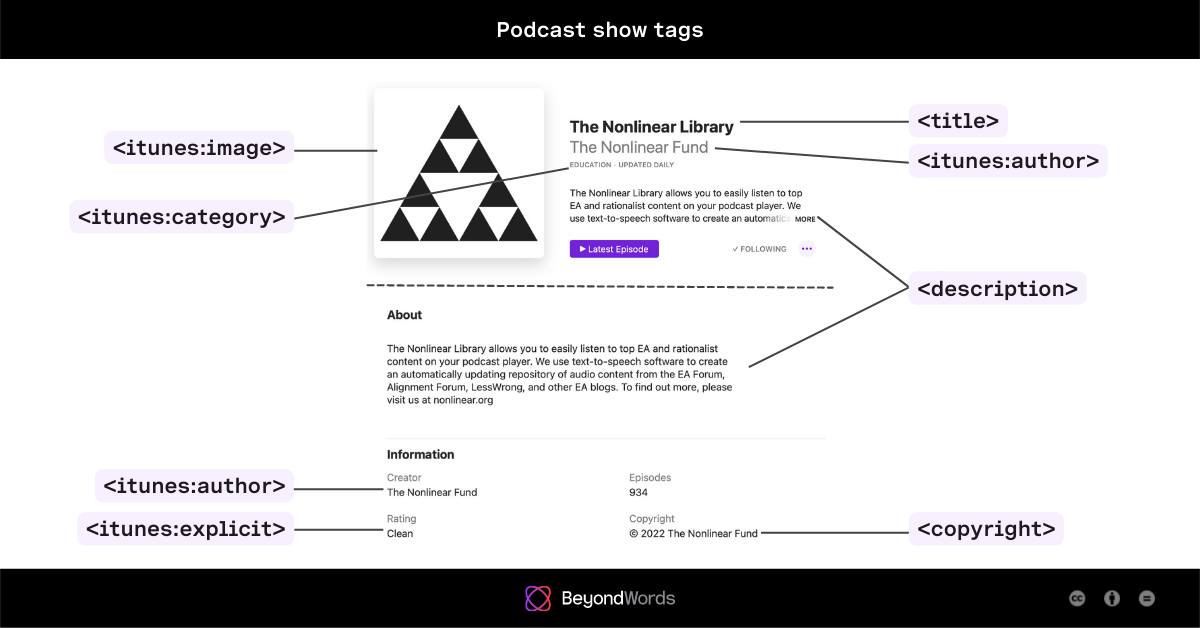
Show tags provide information about your podcast series. This means that they apply to the single <channel> element within your podcast feed.
- Title (<title>)
- Language (<language>)
- Description (<description>)
- Podcast homepage (<link>)
- Author(s) (<itunes:author>)
- Owner name and email (<itunes:owner>)
- Category (<itunes:category>)
- Explicit content (<itunes:explicit>)
- Image (<itunes:image>)
- Situational tags
-
<itunes:title>: Allows you to set a show title specifically for Apple Podcasts. If not provided,<title>will be used. -
<itunes:type>: If your episodes should be consumed in sequential order (i.e. presented from old to new), you should use this tag to specify serial. You will also need to provide<itunes:episode>numbers on each episode. (The default value for this show tag is episodic and does not need to be specified.) -
<itunes:copyright>: You can use this tag to provide copyright details for your show. -
<itunes:new-feed-url>: This allows you to manually change the URL where your podcast is located. -
<itunes:block>: You can use ayesvalue in this tag to hide your podcast from podcast directories like Apple Podcasts and Google Podcasts. (In BeyondWords, you can disable your podcast feed instead.) -
<itunes:complete>: Ayesvalue in this tag indicates that no further episodes will be added to the show. - Title (<title>)
- Audio file information (<enclosure>)
- Globally unique identifier (<guid>)
- Publish date (<pubDate>)
- Description (<description>)
- Duration (<itunes:duration>)
- Episode homepage (<link>)
- Image (<itunes:image>)
- Explicit content (<itunes:explicit>)
- Situational tags
- URL: The URL of the episode's audio file.
- Length: The file size in bytes.
- Type: The file format (audio/x-m4a, audio/mpeg, video/quicktime, video/mp4, video/x-m4v, or application/pdf).
-
<itunes:title>: Allows you to set an episode title specifically for Apple Podcasts. If not provided,<title>will be used. -
<itunes:episode>: Can be used to specify episode numbers. These tags must be used in combination with the<itunes:type>serialshow tag if your episodes should be consumed in sequential order (i.e. displayed from old to new). -
<itunes:season>: The season number, specified as a non-zero integer. This is only displayed when there are at least two seasons. Apple Podcasts will display the latest season first. -
<itunes:episodeType>: Can be used to tag trailer or bonus episodes. The default value is full and does not need to be specified. -
<copyright>: You can use this tag to provide copyright details for your episode. -
<itunes:block>: You can use a `yes` value in this tag to hide your episode from Apple Podcasts. (In BeyondWords, you can disable the audio instead.)
Title (<title>)
The <title> tag provides the name of your show, and is required on Apple Podcasts and Google Podcasts. This appears whenever your show or an episode is featured, so it's important to choose something engaging and descriptive.
Your title will affect which search results your show appears in, so it's wise to consider what would-be listeners might search for. However, if you include lots of keywords purely for search optimization purposes, your podcast may be removed from directories, so tread carefully.
You can also make it easier for listeners to find your show by naming it something unique, memorable, and that's unambiguously pronounced/spelled. For example, numbers can create confusion, as listeners won't know whether to search with digits or words.
While the limit is 255 characters, it's a good idea to keep your podcast title concise. This will make it more memorable and reduce the risk of it being clipped. The most popular length for podcast show titles is 16 characters, and 75% are 29 characters or shorter.¹
When creating a podcast feed in BeyondWords, you can simply enter your show title into the corresponding field.
Language (<language>)
The language spoken on your show. This is submitted as the two-letter language code defined by ISO 639-1. For example, English is en.
If you're optimizing your podcast feed in BeyondWords, you can simply select the language from a dropdown list.
Description (<description>)
The show description, also known as the podcast summary or blurb. This should explain what your show is about and what it has to offer, encouraging browsers to become listeners.
You can include up to 4,000 characters (this includes any code, if you decide to submit HTML in a CDATA section), but the average description is just 243 characters long.² Podcast directories will typically display just a line or two, hiding the rest in a 'read more' section, so it's important to front-load the most important details.
Some podcast search engines take show descriptions into account, so it's worth incorporating keywords and phrases where you can do so naturally.
When creating a podcast feed in BeyondWords, you can simply enter your show description into the corresponding field.
Podcast homepage (<link>)
The main website or webpage URL associated with your podcast. This is optional, but it's worth providing if you have one so that users can learn more about your show.
When creating a podcast RSS feed in BeyondWords, you can simply paste your podcast URL into the corresponding field.
The name of the person(s) or organization(s) authoring content for the podcast.
In BeyondWords, you can easily add and delete multiple author names.
Owner name and email (<itunes:owner>)
This show tag contains the email address of the podcast owner in a nested <itunes:email> tag and the name of the owner in a nested <itunes:name> tag.
These details are used for account verification and admnistration purposes and are not displayed on podcast directories.
If you're creating your podcast feed in BeyondWords, you can simply enter the name and email address into the corresponding fields.
Category (<itunes:category>)
The category or categories that your show falls into. This tag can help your podcast to appear in relevant categories, charts, personalized recommendations, editorially curated collections, and search results.
To optimize this tag for Apple Podcasts, you should include the one or two most relevant categories from this list: Arts, Business, Comedy, Education, Fiction, Government, History, Health & Fitness, Kids & Family, Leisure, Music, News, Religion & Spirituality, Science, Society & Culture, Sports, Technology, True Crime, TV & Film.
You can also specify a subcategory for each, if applicable. You can view your options here.
To optimize this tag for Google Podcasts, you should also include one or more secondary categories from this list: Arts, Business, Comedy, Education, Games & Hobbies, Government & Organizations, Health, Kids & Family, Music, News & Politics, Religion & Spirituality, Science & Medicine, Society & Culture, Sports & Recreation, TV & Film, Technology.
It is not necessary to pre-optimize this tag for Spotify, as you will have the option to select categories when submitting your RSS feed via Spotify for Podcasters.
When you host your podcast feed on BeyondWords, you can optimize your category selections for Apple Podcasts, Spotify, and Google Podcasts.
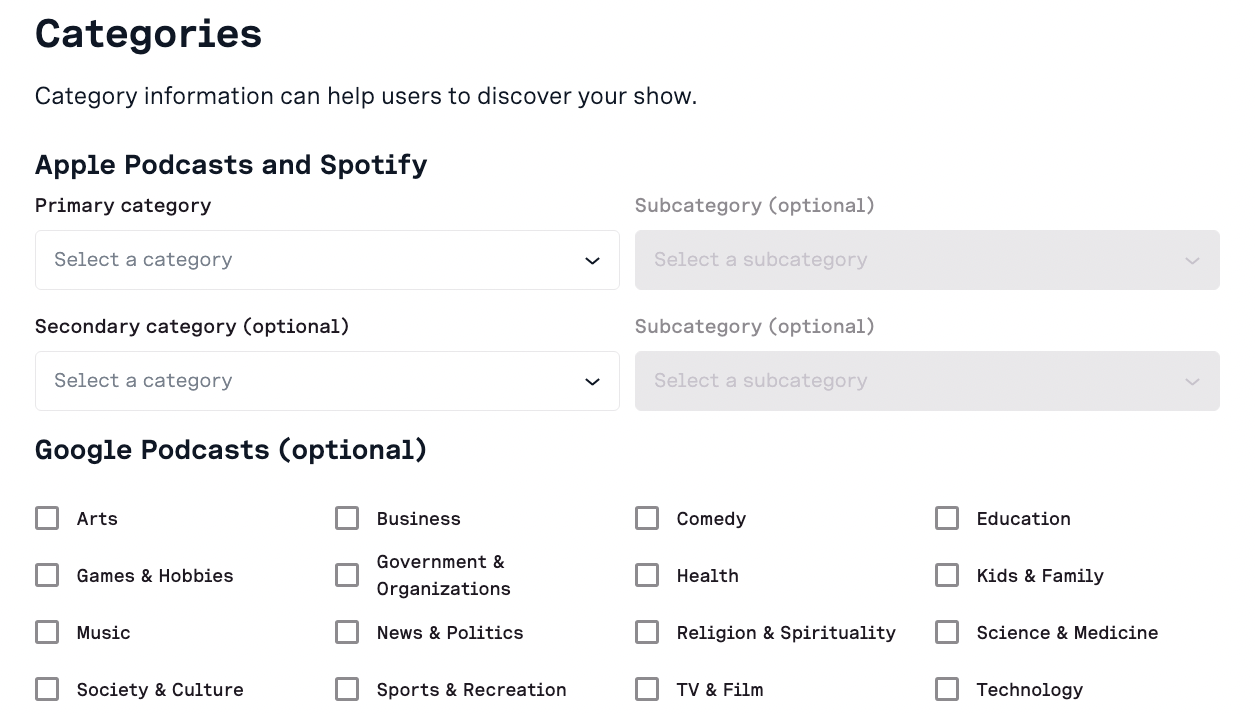
Explicit content (<itunes:explicit>)
This RSS tag states whether or not your show contains explicit content. There is no strict definition, but podcasts that contain explicit language or cover adult topics are generally considered explicit. Please note that <itunes:explicit> values set at the episode level will override the show default.
If the <itunes:explicit> tag is specified as true, Apple Podcasts will display an 'Explicit' parental advisory message. Your show may be blocked in certain territories. If `false`, Apple Podcasts will display 'Clean' on the show.
Google Podcasts uses yes and no values for this tag, while Spotify uses yes and clean.
An unspecified <itunes:explicit> show tag will be treated as false/no/clean. In BeyondWords, you can specify true/yes using the checkbox.
Image (<itunes:image>)
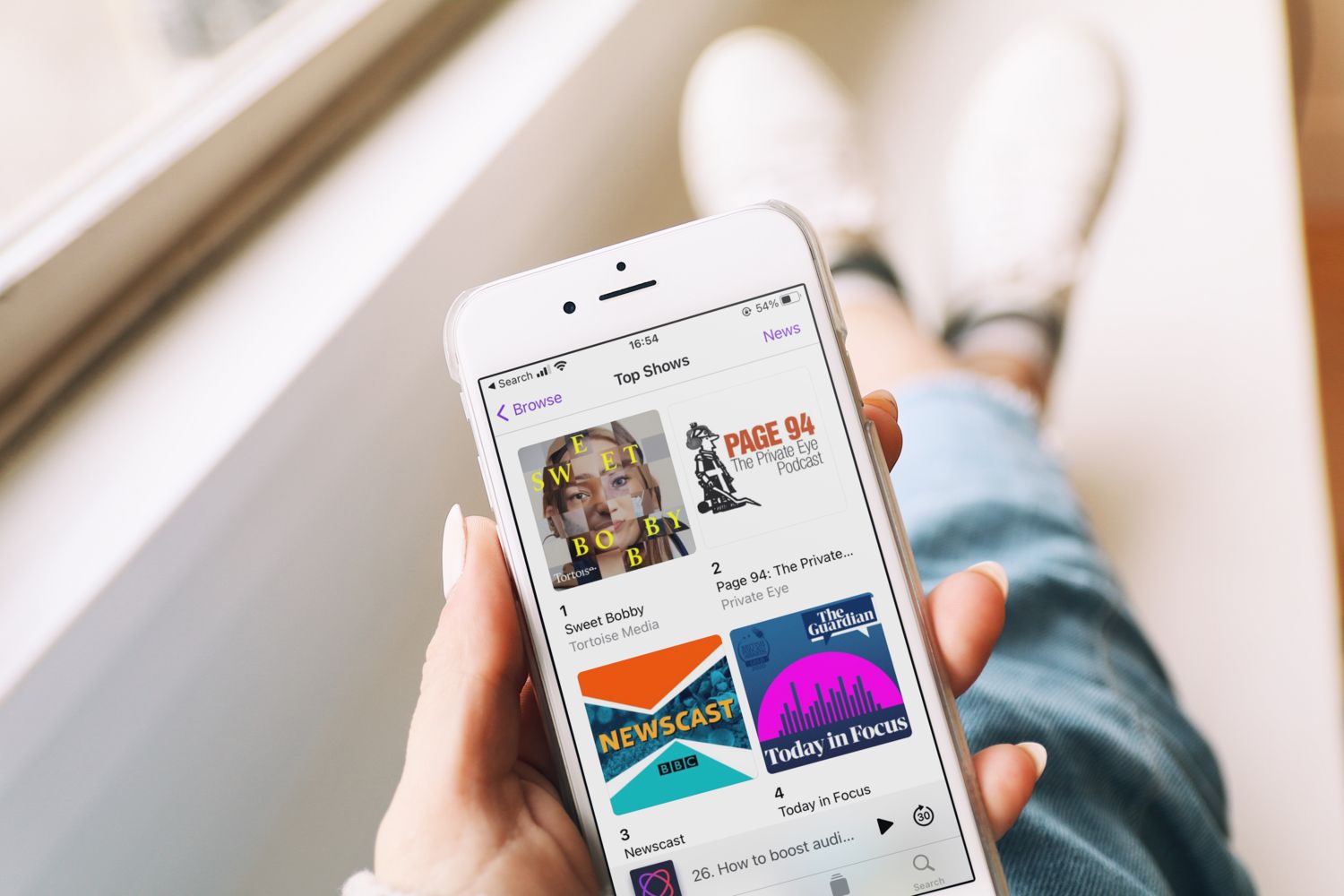
The cover artwork for your show. This image will typically appear alongside your show title, as well as individual episode titles, when users are browsing. It will be displayed in the podcast player, too.
Podcast artwork is often displayed as a thumbnail, so choose something that's recognizable and eye-catching on a small scale. Most podcasters will include the show title as well as a relevant logo, illustration, or photo. Some simply add the text to a themed background.
For compatibility with Apple Podcasts and other directories, your feed should supply the image as a URL containing a .jpg or .png file type. It should be a 3,000 x 3,000 pixel square, in the RGB colorspace, and in a resolution of 72dpi. Transparency is not supported.
If you're using BeyondWords, simply upload your artwork to our platform and we'll host it for you.
Situational tags
These show tags are not required or necessarily recommended, but they are useful in certain situations.
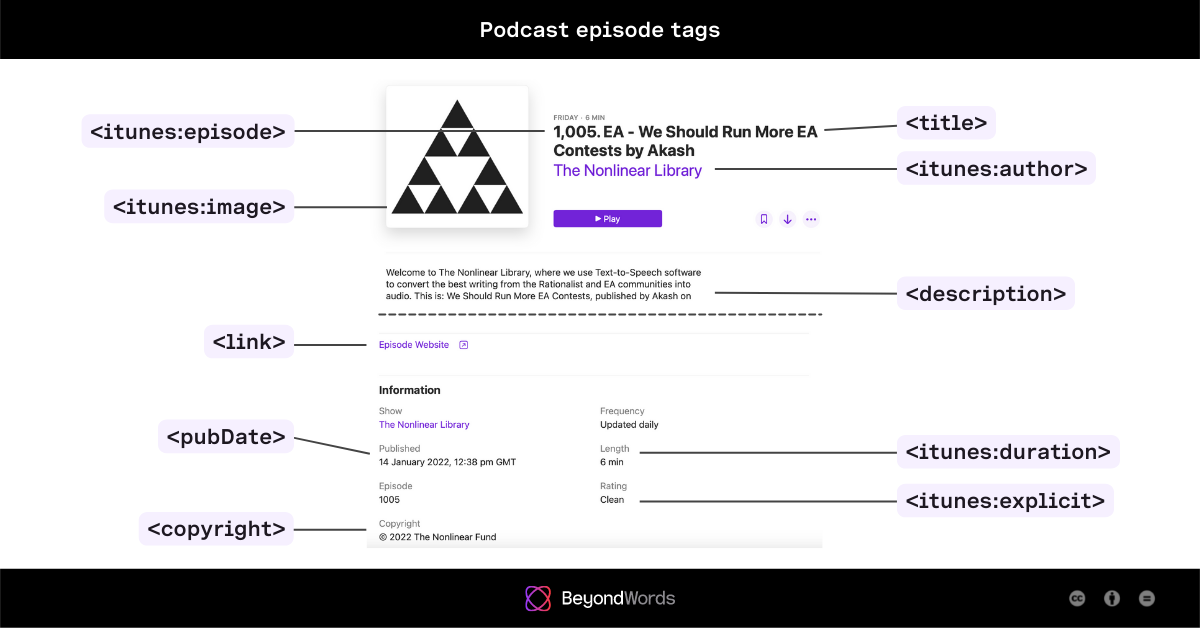
Episode tags provide information about individual podcast episodes. These are contained within <item> tags.
Title (<title>)
The title of your episode. This should help users understand what the episode is about and encourage relevant audiences to listen. Consider what words potential listeners might search for in order to optimize your title for search but, as always, avoid keyword-cramming.
You can technically include up to 255 characters, but titles will be truncated to fit different displays. The median podcast episode title length is just 36 characters.³
You should avoid including season and episode numbers in episode titles (these should be specified using <itunes:season> and <itunes:episode> tags instead). You should also avoid repeating your show title, as this is usually displayed alongside anyway.
In BeyondWords, the episode <title> tag is populated with the audio title. You can edit an audio's title anytime.
Audio file information (<enclosure>)
The <enclosure> tag should contain three attributes:
If you host your podcast on BeyondWords, our platform will create these tags for you automatically.
Globally unique identifier (<guid>)
A permanent, case-sensitive ID for the episode. If not provided, the episode URL (as provided by the <enclosure> tag) will be used instead.
Publish date (<pubDate>)
The date and time that the episode was released.
If you want to release your podcast at a particular time, BeyondWords makes scheduling easy. Simply select 'Schedule a time' when uploading episodes or creating audio in the Editor. Whatever you decide, we'll create the <pubDate> tag automatically.
Description (<description>)
The episode description, also known as the summary or blurb. It's not required, but this tag can help you convert browsers into listeners by informing them what the podcast episode is about and what it has to offer.
You can include up to 4,000 characters (this includes any code, if you decide to submit HTML in a CDATA section), but consider what users are likely to read — and how much is likely to be displayed. As with your show title, it's a good idea to front-load the most important details.
Some podcast search engines take episode descriptions into account, so it's worth incorporating keywords and phrases where you can do so naturally.
You can include a description when uploading podcasts to BeyondWords.
Duration (<itunes:duration>)
The duration of the podcast episode, usually provided in seconds.
If you're using BeyondWords, our platform will create this tag for you automatically.
Episode homepage (<link>)
The main webpage URL associated with your episode. This is optional, but it's worth providing if you have one so that users can learn more about your episode and access related resources.
Image (<itunes:image>)
The artwork for your episode. This is not necessary (if not supplied, the show image will be used instead), but it can help to improve engagement with specific episodes. Consider choosing something that clearly communicates the episode topic and encourages click-through, even at thumbnail size.
For compatibility with Apple Podcasts and other directories, your feed should supply the image as a URL containing a .jpg or .png file type. It should be a 3,000 x 3,000 pixel square, in the RGB colorspace, and in a resolution of 72dpi. Transparency is not supported.
Explicit content (<itunes:explicit>)
This tag states whether or not your episode contains explicit content. The default state is determined by the <itunes:explicit> tag at the show (<channel>) level.
There is no strict definition, but podcasts that contain explicit language or cover adult topics are generally considered explicit, and it is usually best to err on the side of caution.
If the <itunes:explicit> tag is specified as true, Apple Podcasts will display an 'Explicit' parental advisory message on the episode. Your episode may be blocked in certain territories. If false, Apple Podcasts will display 'Clean' on the episode.
Google Podcasts uses yes and no values, while Spotify uses yes and clean.
Situational tags
These episode tags are not required or necessarily recommended, but they are useful in certain situations.
Launch your podcast today
If you're building your RSS feed yourself, you may wish to learn more about the RSS requirements on Apple Podcasts, Google Podcasts, and Spotify [PDF].
For a quick and easy way to launch your podcast, create your free BeyondWords account .
Creating a podcast feed, complete with optimized show metadata, is as easy as filling in a form. You can then submit your podcast feed URL to the podcast directories of your choice.
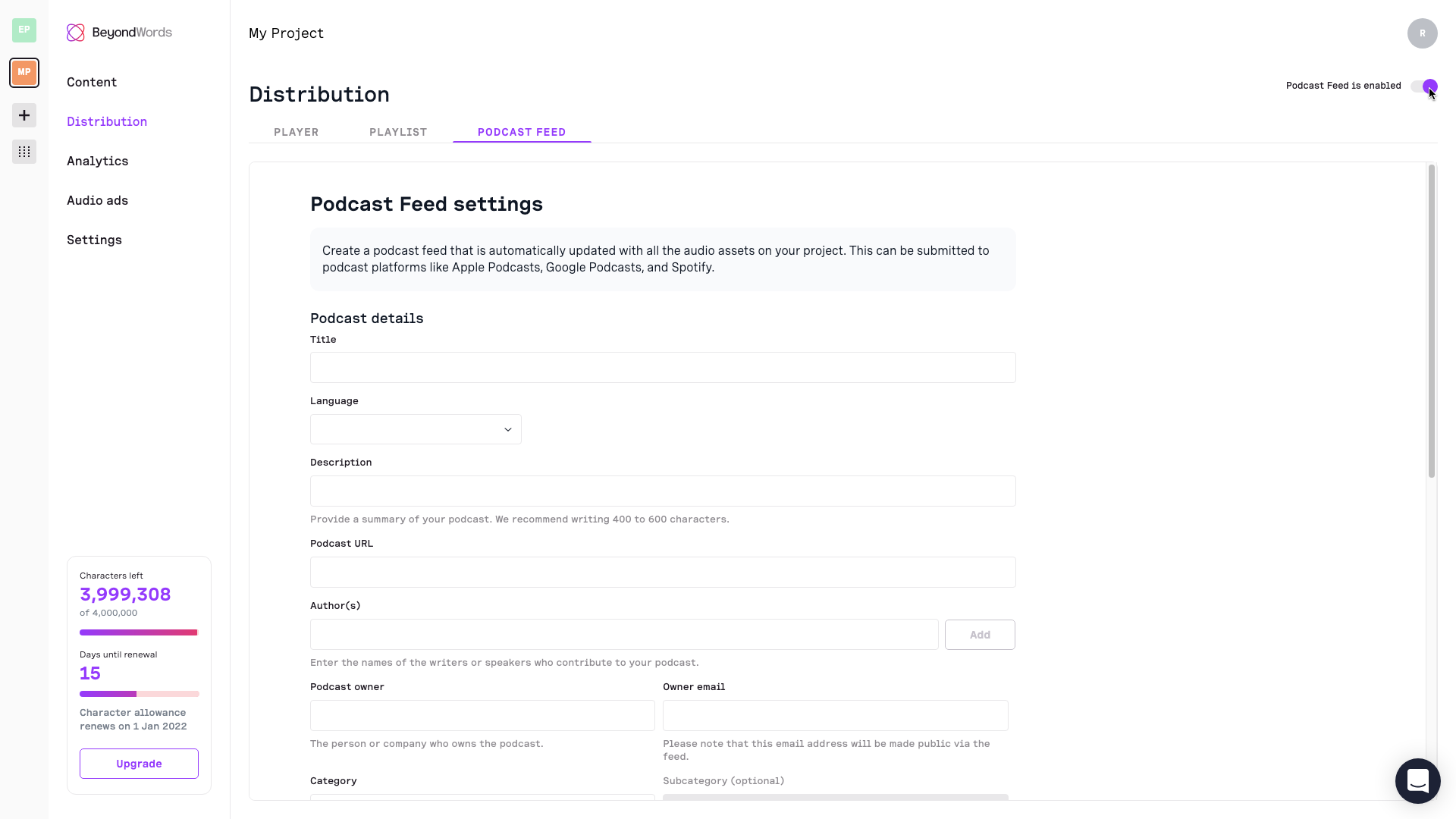
And BeyondWords isn't your regular podcast hosting service. As well as having the option to upload pre-recorded episodes, you can create audio from text using advanced AI voices. You can even create a custom voice to give your podcast a unique sound.

Sources
wilbankscoperfell.blogspot.com
Source: https://beyondwords.io/knowledge-base/how-to-optimize-podcast-rss-feed/
0 Response to "Turn Audio Files Into Rss Feed"
Post a Comment